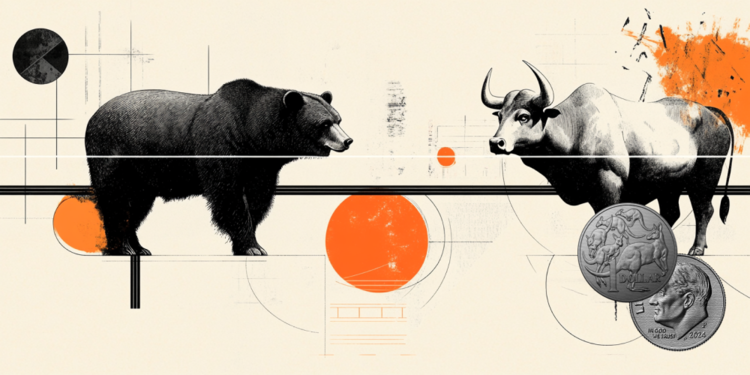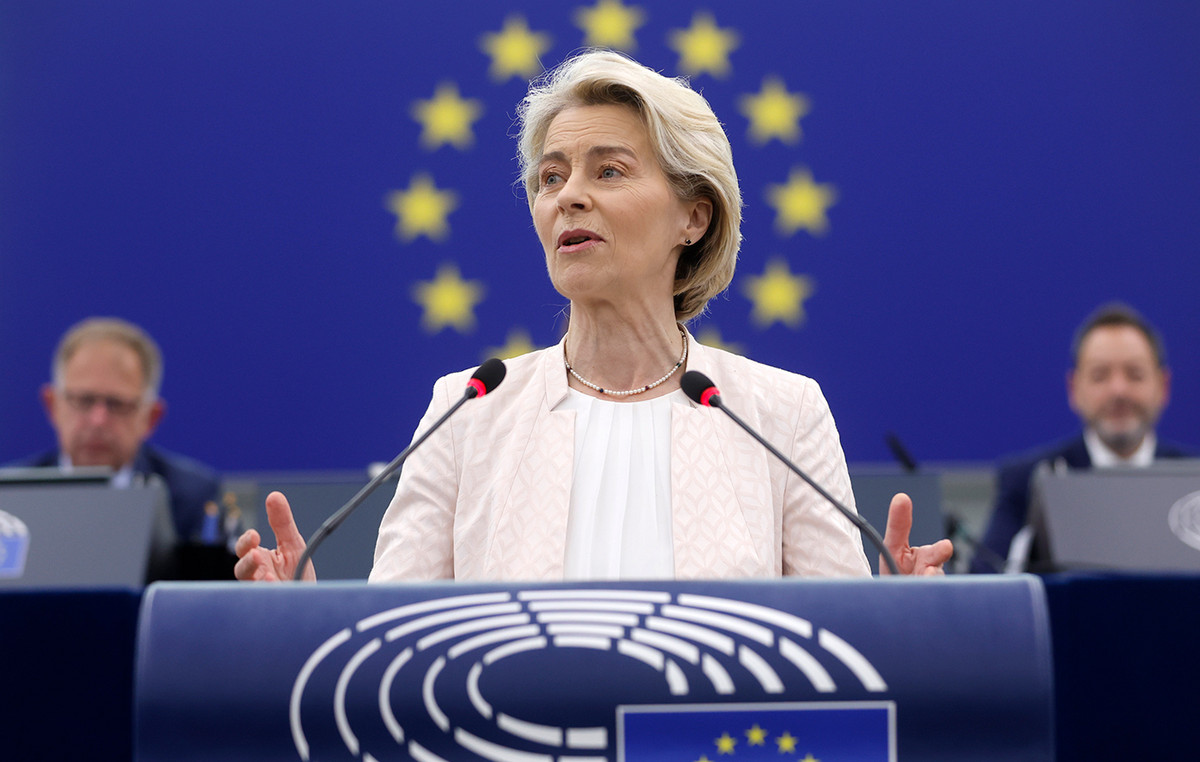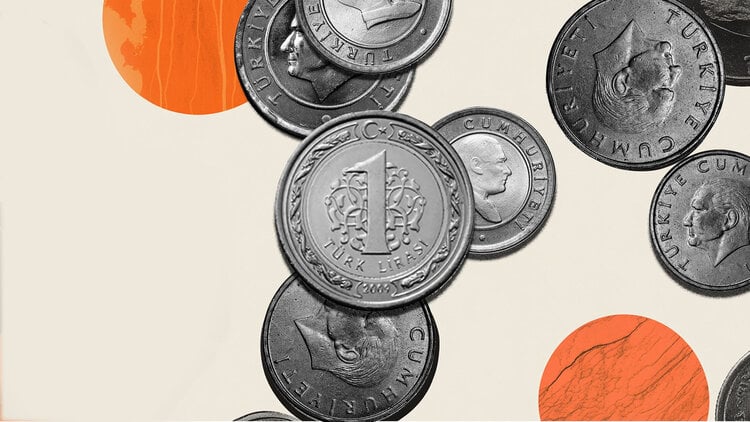Bee populations are decreasing. More than half of the bat species in the United States are in severe decline or listed as endangered. And international scientists recently announced that the monarch butterfly is close to being extinct.
What these three creatures have in common is that they are all pollinators. Without them, fruits, vegetables and other plants would not be pollinated, and this is a big problem for our food supply.
“One in three servings of food we eat” is directly linked to a pollinator, Ron Magill, director of communications and wildlife expert at Zoo Miami, told CNN . About 30% of the food that arrives on our tables is due to butterflies, bees and bats, among others.
Losing these critical populations could also mean losing some of our favorite foods.
Apples, melons, cranberries, pumpkins, zucchinis, broccoli and almonds are among the foods most susceptible to pollinator decline, according to the US Food and Drug Administration (FDA). Bees, in particular, are responsible for pollinating about 90 commercially produced crops, the agency reports. Even tequila is at risk.
“It’s all so intricately connected. Whether you’re eating food that’s directly pollinated or you’re eating something that depends on that pollinator,” Magill said. “It’s a domino effect.”
In other words, whether you’re eating fried chicken or pork chops, these chickens and pigs eat fruits, vegetables, and other plants that rely on pollinators.
And the climate crisis has affected pollinators. While more intense and prolonged drought is the most obvious impact, a growing concern is the effect of extreme heat – particularly on butterflies.
“As butterflies are some of the most sensitive insects to temperature changes, they are considered the ‘canary of the coal mine’ when it comes to climate change,” Magill said.
Warmer temperatures cause plants to flower earlier, which is out of sync with when butterflies lay their eggs and metamorphose. This means that the flowers they depend on for food will have already bloomed, leaving little for the butterflies to feed on, which in turn will greatly affect their ability to reproduce and survive.

This snowballs into a cyclical problem where butterflies cannot get the food they need to reproduce, nor can plants be pollinated – causing both a lot of suffering.
Also, for butterflies like monarchs, which are known for long migrations from the northern US to Mexico – food along their route may no longer be available by the time the natural migration takes place.
A 2019 United Nations (UN) report found that 1 million species are at risk of extinction in the coming decades as the climate crisis accelerates. Magill says we’re starting to see this in insect populations.
“One million species in the next 50 years,” Magill said. “This is catastrophic.”
Human impact on natural pollinators
Scientists at the International Union for Conservation of Nature last month added the monarch butterfly – one of the world’s most popular and recognizable insects – to its red list of endangered species, noting that the destruction of its habitat and the increase in of temperatures fueled by the climate crisis are increasingly threatening the species.
“Climate change has significantly impacted the migratory monarch butterfly and is an ever-growing threat; drought limits milkweed growth [gênero botânico] and increases the frequency of catastrophic fires, extreme temperatures trigger early migrations before milkweed are available, while severe weather has killed millions of butterflies,” the scientists reported.
Bees began to show an alarming decline in 2006. From April 2020 to April 2021, beekeepers in the US lost about 45% of their colonies, according to the Auburn University College of Agriculture, which reports that the average acceptable volume is of about 20%.

Climate change may be amplifying a deadly parasite in bee populations. THE research showed These bee-killing parasites become more prevalent in warmer climates, meaning that as temperatures continue to rise, the amount of parasites can increase and become catastrophic for bees.
Several countries and even some US states are already taking action to help protect these crucial species. California is pushing to restrict pesticides that kill bees.
Magill noted that while these declines are happening gradually, they will end up being too big for ecosystems to overcome — as a tipping point beyond which some species will be lost forever.
tequila at risk
Bats also play an irreplaceable role in food security. The US Department of Agriculture points to recent studies who estimate that bats eat enough pests to save more than $1 billion a year in crop damage and pesticide costs in the United States, primarily the corn industry.
“Across all agricultural production, consumption of insect pests by bats results in savings of more than $3 billion a year,” according to the U.S. Fish and Wildlife Service.

Bats are also vital pollinators.
“You wouldn’t have tequila if you didn’t have bats, because that’s the only thing that pollinates the agave plant that makes tequila,” Magill said.
Bats are affected by the climate crisis in the same way as butterflies and bees.
“Bats are also more susceptible to heat stress,” Magill said. “There were bat deaths in large numbers as a result of rising temperatures that led to death from heat stroke, as bats have limited cooling mechanisms.”
Unlike butterflies and bees, though, bats aren’t just a vital pollinator — they’re considered a major seed disperser and critical to our ecosystems, just like birds.
“The seeds of the fruits they eat germinate after they pass through the digestive system and are then deposited wherever they go to ‘plant’ future trees,” Magill said.
how can you help
This is a global issue, which means that fixes need to be on a global scale, but there are still ways each can help individually.

“Plant gardens with native wildlife. The native plants that are critical to the survival of these animals,” Magill said.
Native plants will also require less care. If you plant a cactus in Louisiana, it will not do well in the humid environment. Likewise, marshmallows or begonias will not do well in the southwestern desert, as they require a tremendous amount of water to bloom.
A new online database helps users in the UK find pollinator-friendly plants for their gardens and support biodiversity. Similar lists of native pro-pollinating plants exist for the United States.
“When you plant native wildflowers, you are planting a buffet for wildlife that needs it to survive,” says Magill. “These are the refueling stations for our pollinators.”
Magill points to Lady Bird Johnson’s efforts to beautify the roads in the US. Even though her goal was national, her efforts shone in Texas.
“She did a wonderful thing with wildflowers in Texas,” says Magill. “There are times when you can drive through Texas and see wildflowers as far as the eye can see, and it’s such a beautiful sight because she understood the value of that.”

While other states are also doing this along roadsides, residents can do the same in their homes.
“We have beautiful plant life in our native areas where we live in this country. If we can focus more on that and start rebuilding what was naturally here, we can start to bring back those natural rhythms.”
You can also strive to reduce the use of pesticides and chemicals in your home. Good alternatives include using organic products such as compost for soil health and adding beneficial insects like ladybugs, mantises or even nematodes to keep pests away.
Source: CNN Brasil
I’m James Harper, a highly experienced and accomplished news writer for World Stock Market. I have been writing in the Politics section of the website for over five years, providing readers with up-to-date and insightful information about current events in politics. My work is widely read and respected by many industry professionals as well as laymen.







